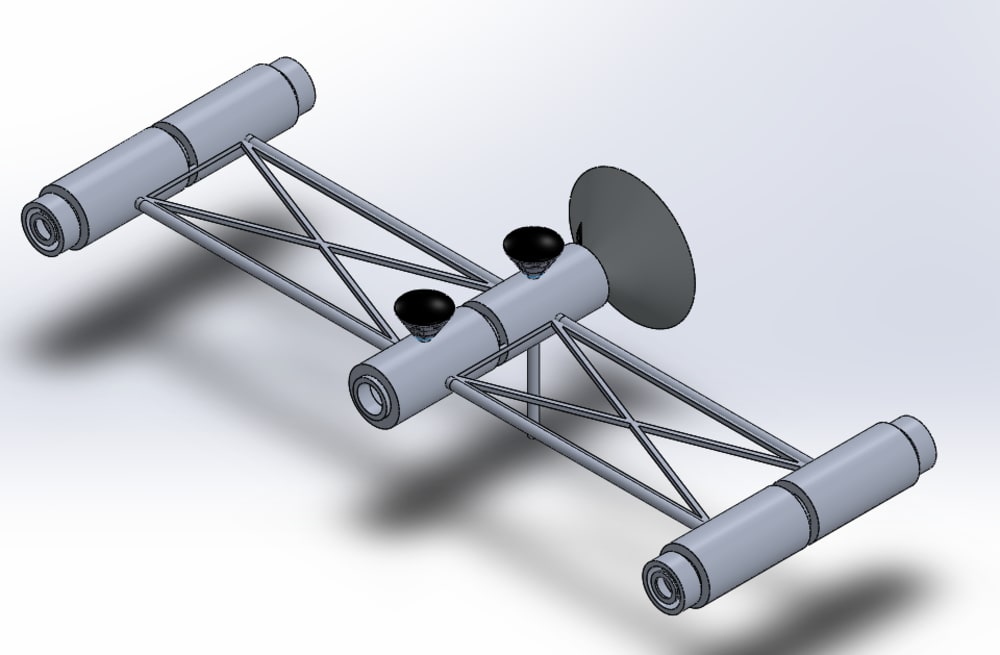Mars offers an attractive first step for expansion into the solar
system and beyond. Offering a range of possibilities, Mars plays a
vital role in our future. Humans have not ventured into the extreme
deep space environment, as this hostile environment proves difficult
to overcome.
The proposed spacecraft, Solar Adaptive Gathering/Observation Nautilus
(SAGON), is a vessel designed for manned deep space exploration. The
initial purpose of the craft is for a mission to the planet Mars,
however it designed capable of traveling deeper into the solar system.
It is modular designed versatile enough to perform multiple missions
before needing to be retired. The ship is designed majorly off of
existing technologies, therefore less costs are associated with the
ship and less room for error from technologies not yet matured.
This craft fulfills each of the goals presented in the NASA Next Space
Technologies for Exploration Partnerships, NextSTEP, release. This
release detailed six specific subcategories that that were key for the
design to solve. These subcategories are life support, environmental
monitoring, crew health, EVA, fire, and radiation protection.
Life support is currently at a 42% recovery of oxygen on the
international space station, along with a water recovery of around
90%. The goals of the proposal are a larger than 75% oxygen recovery
and a water recovery of more than 98%. To meet this, existing water
recycling systems are implemented along with a miniaturization of the
Micro-Ecological Life Support System Alternative, MELiSSA, project
research, which has created a self-sustaining ecosystem.
Environmental monitoring will be used to assess the habitability of
the modules during extended missions in deep space. This will be done
using spectrometers and other sampling for air and water contaminants.
It is important to not only identify if there a health risk, but
quickly locate its origin. Fast, on site testing is to be incorporated
to deliver as much information as possible to both NASA and the crew.
The capsule designed for this proposal incorporates an artificial
gravity of approximately .4 g’s, providing greater safety to the crew.
The presence of some gravity will help stave off muscle and bone
degradation.
Fire protection, is a more defined, less dynamic issue. The main goals
are to create a unified approach, capable of working in almost any
function. This would be done by incorporating fire sensors into
potential fire prone devices, and allowing water vapor and CO2
extinguishers to autonomously target fires if an anomaly is detected
by the sensors.
Radiation protection is a very important subject matter. For this
craft, there is a safe compartment where astronauts can seek shelter
from severe radiation. This shield will be comprised of the water
supply, which is an excellent radiation shield. The rest of the ship
will be shielded using polyethylene and hydrogenated boron nitride
nanotubes (hydrogenated BNNT’s).
Like this entry?
-
About the Entrant
- Name:Joshua Fuller
- Type of entry:teamTeam members:Zachary Chester, Joshua Fuller
- Software used for this entry:Solidworks
- Patent status:none





